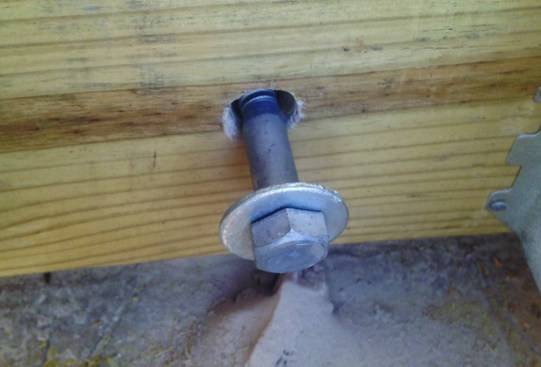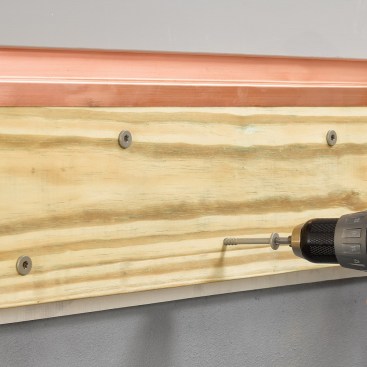Q: For installing a deck ledger, structural screws such as LedgerLoks (which don’t require pre-drilling) are so much easier to use than the lag screws and through-bolts referenced in the IRC. But are they a one-to-one replacement for lag screws, following the number and placement of fasteners specified in the code?
A: Glenn Mathewson, a consultant and educator with BuildingCodeCollege.com, responds: No, and no matter how strong anyone can make them, structural screws never will be … unless they are as large in diameter as the lag screw they are replacing. Why can I say this with such certainty? Because it has nothing to do with the strength of the screw. In this application, the limiting factor in the connection is the wood ledger and band joist.

Structural deck ledger screws (left) are easier to install than 1/2-in. diameter galvanized lag screws (above), because pre-drilled holes aren't required. But they must be installed following the manufacturer's specifications, rather than according to prescriptive guidelines in the IRC.
To understand why, consider Sir Isaac Newton’s Third Law of Motion, which states, “For every action, there is an equal and opposite reaction.” When you stand on a floor, for example, you put your weight on the floor, while the floor basically applies an equal amount of force back on your feet. What’s the first member of that connection to get sore after a long day (Hint–it’s not the floor)? Now, imagine standing just on the balls of your feet, so that the same amount of weight is concentrated on a smaller part of each foot. You’re probably not as comfortable as when using your whole foot, right? And that’s the key: Because the structural screw has a smaller shank diameter compared with a 1/2-inch-diameter lag screw, the same load is placed on the wood over a smaller area, and – similar to standing on the balls of your feet – the wood can’t handle it.
When designing wood connections, engineers consider the crushing effect on wood grain when loaded and limit the load so as not to crush the wood. For this reason, the limits of a 1/2-inch-diameter lag screw assume that the fastener will be in contact with 1/2 inch of wood, compared with a 5/16-inch-diameter structural screw, which will be in contact with less wood. Even if the screw were magically invincible, more structural screws would be required than lag screws to provide the same load-bearing capacity.
For this reason, structural-screw manufacturers that market fasteners specifically designed for ledger connections provide engineered fastener patterns and load tables, and these are the ones you must use. You cannot use the spacing published in the IRC for ½-inch-diameter fasteners. But, there is a benefit to using structural screws in addition to ease of installation: You’ll find that structural screw manufacturers often provide more design flexibility than the code, such as more options for different band joist materials, and design load capacities that are greater than 40 psf.
